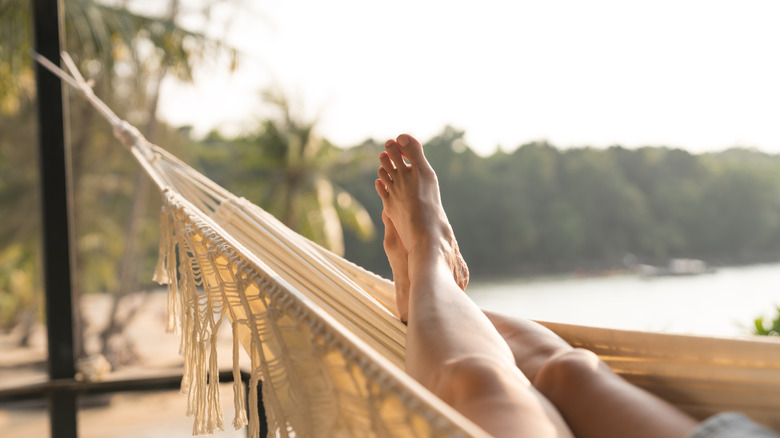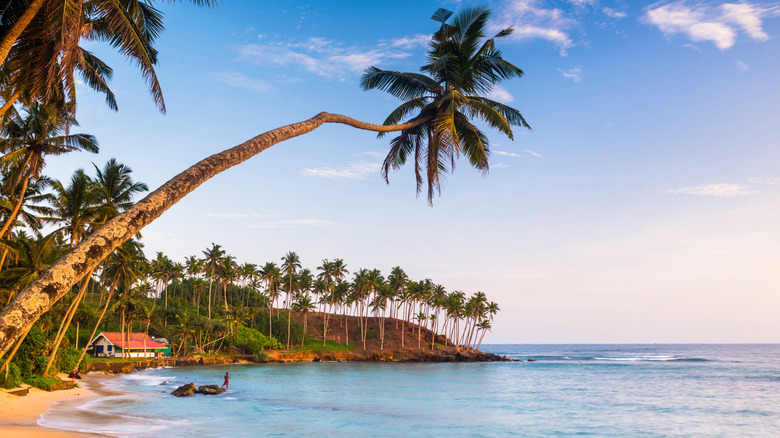The Underrated Island Destination That Won't Break The Bank
Asia and the Pacific Islands saw 237 million international tourism arrivals in 2023. That's 65% of pre-pandemic levels, and the highest share of international travel since 2019, according to the World Tourism Organization's International Tourism Highlights 2024 Edition. Even budget travelers are drifting back to Asia, and Sri Lanka stands out as a low-cost island that flies under the radar.
The Sri Lanka Tourism Development Authority reported that visitors spent an average of just $181.15 per day in the first half of 2024. That covers lodging, meals, transport, and activities. You get the full island package without the higher prices in other traditional hotspots. Compare that to the Maldives, where MadlyMaldives' 2024 budget breakdown pegged daily spending near $300 for a mid-range experience. For travelers watching how much of their income goes to a vacation, Sri Lanka hits the sweet spot of price and value.
More than 1 million tourists arrived in the first six months of 2024, a 61.6% jump from the same period in 2023, per the Sri Lanka Tourism Development Authority. The draw is broad, ranging from cuisine to history to outdoor activities. For example, the renowned tea industry, which the Sri Lanka Export Development Board reported produces 340 million kilograms (750 million pounds) a year.
Why Sri Lanka travel is so affordable
Sri Lanka's tourism industry runs on volume, not just pricey stays, with low costs for visitors and zero visa requirements for many countries (including the U.S.). Local businesses back up the value. Travel blogger Lauren Juliff of Never Ending Footsteps reported that family-run homestays offer good deals for a hotel room, charging as low as $19 per night, while local meals cost as low as $4 for breakfast. Budget travelers can avoid common money mistakes while traveling in Sri Lanka by choosing local eateries, where meals are significantly more affordable than at Western-style restaurants. This cuts costs while supporting community tourism.
Public transport is just as cheap, thanks to government regulation and broad availability. The Ministry of Transport of Sri Lanka's fare schedule sets urban bus rides as low as 27 Sri Lankan rupees, or about 9 cents, keeping intercity travel affordable for both locals and visitors. Sri Lanka Railways charges no more than 540 rupees ($1.79) for third-class tickets. That means visitors don't need costly private rides or domestic flights to get around. They can explore the whole island on the cheap.
Sri Lanka offers more than just beaches
Ancient capitals and colonial buildings dot Sri Lanka's interior and coasts. The ruins of Anuradhapura — once the island's capital and now a UNESCO World Heritage Site — are remarkably intact, and entry costs $35. Polonnaruwa's royal complexes also cost $35 but feel entirely different. You wander through medieval chambers, palaces, and temples. Meanwhile, Sigiriya's rock fortress, which opens for the same price, contains frescoes and landscaped gardens. Visitors can explore these heritage sites during the shoulder season to get costs even lower.
Adventure seekers get clear, budget-friendly prices in Sri Lanka, too. White-water rafting on the Kelani River starts at $20 per person. There's also hiking and guided treks in the Knuckles and Horton Plains ranges. Surf lessons along the southern coast start between $12 and $20 an hour, and scuba diving packages run about US $75 for two dives, according to Never Ending Footsteps. The 1,600-kilometer coastline is vibrant with windsurfing and water skiing as well.
Wildlife safaris mix animal encounters with a benefit for nearby villages. The Sri Lanka Tourism Development Authority reported that in early 2024, parks such as Yala, Horton Plains, and Udawalawe received 97.5% of their revenue from foreign ticket sales and just 2.5% from domestic guests. Safari packages — park entry plus a shared-jeep drive — cost $90 to $150 at major national parks in Sri Lanka, according to Feelfree Travel, providing travelers with world-class wildlife experiences while directly supporting conservation efforts and local tourism.


